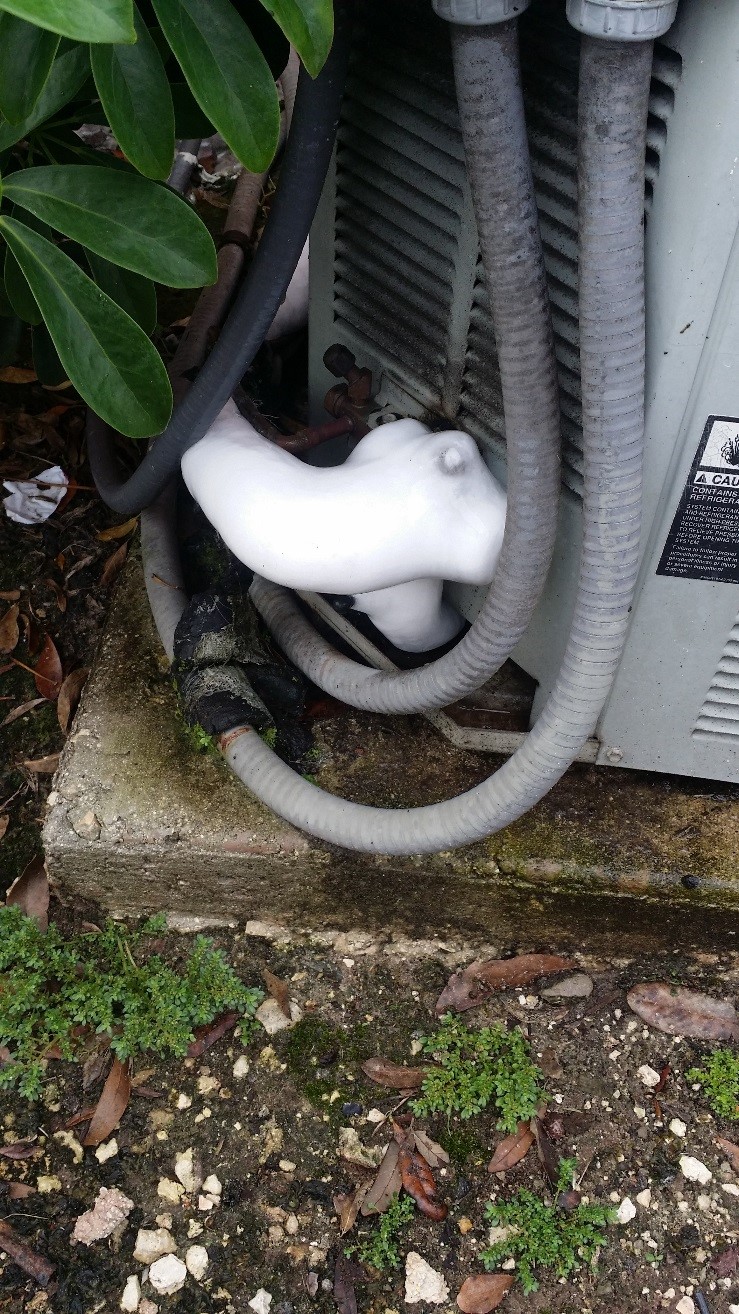Advice on Unfreezing a Frozen AC Pipe - Reinstating Normal Functionality
Advice on Unfreezing a Frozen AC Pipe - Reinstating Normal Functionality
Blog Article
What are your opinions on How can I fix an air conditioner’s frozen pipe??

Introduction
Discovering that your AC pipeline is frozen can be concerning, especially throughout warm summer season when you rely on your air conditioning unit the most. Recognizing what to do in such a situation is vital to avoid further damages to your air conditioning system and ensure your convenience inside.
Understanding the Causes
Numerous elements can add to the freezing of an AC pipe. Recognizing these causes can help you resolve the issue successfully.
Lack of Airflow
One usual reason for an icy air conditioning pipeline is inadequate air flow. When the airflow over the evaporator coil is restricted, it can create the coil to drop below freezing temperature level, causing ice development on the pipe.
Reduced Refrigerant Levels
Inadequate cooling agent degrees in your air conditioning system can also cause a frozen pipeline. Low refrigerant levels can create the stress in the system to drop, causing the freezing of wetness on the evaporator coil.
Winter Conditions
In cooler environments, freezing temperature levels outside can add to the freezing of air conditioner pipes. If your air conditioner unit is not appropriately shielded or if there are leaks in the ductwork, chilly air can penetrate the system, causing the pipe to freeze.
Dirty Air Filters
Filthy or stopped up air filters can limit air flow in your a/c system, resulting in numerous concerns, including a frozen pipe. It's essential to replace or clean your air filterings system on a regular basis to make certain proper air flow and protect against ice buildup.
Indications of a Frozen Air Conditioner Pipe
Acknowledging the indications of an icy AC pipeline is vital for punctual activity.
Reduced Airflow
If you discover a considerable decline in air flow from your vents, it can show a frozen pipe.
Ice Buildup on the Pipe
Noticeable ice buildup on the refrigerant line or the evaporator coil is a clear sign of an icy AC pipeline.
Weird Sounds from the Unit
Uncommon audios, such as hissing or gurgling, coming from your AC unit can signal that there's ice present on the pipe.
Immediate Actions to Take
When faced with an icy air conditioner pipeline, it's vital to act promptly to avoid additional damage to your cooling system.
Turning off the air conditioning
The initial step is to shut off your air conditioner to prevent the system from running and exacerbating the issue.
Looking for Blockages
Check the location around the indoor unit for any kind of blockages that may be blocking air movement, such as furnishings or drapes.
Thawing the Pipe
You can utilize mild methods like positioning towels soaked in warm water around the icy pipe to help thaw it gradually.
Preventive Measures
Taking preventive measures can help avoid future events of an icy air conditioning pipeline.
Regular Maintenance Checks
Set up routine maintenance checks with a specialist HVAC service technician to guarantee that your AC system is running effectively.
Altering Air Filters
On a regular basis change or clean your air filters to stop air movement constraints and maintain optimum performance.
Shielding Exposed Pipes
If your air conditioning pipelines are subjected to cold temperature levels, think about insulating them to stop cold during cold weather.
Seeking Professional Help
If DIY techniques fail to solve the concern or if you're unclear regarding how to continue, it's best to look for assistance from a certified HVAC technician.
When DIY Methods Fail
If your efforts to thaw the pipeline or address other concerns are unsuccessful, it's time to contact an expert.
Importance of Hiring a Professional HVAC Technician
A qualified HVAC technician has the expertise and tools necessary to detect and repair concerns with your air conditioner system securely and successfully.
Conclusion
Taking care of an icy AC pipe can be a discouraging experience, yet knowing how to respond can aid reduce damage and restore comfort to your home. By comprehending the reasons, identifying the signs, and taking prompt action, you can efficiently address the problem and protect against future occurrences.
Frozen AC Line: Why It Happens & What To Do About It
A frozen AC line can be a rather peculiar sight in a place like Phoenix, Arizona where nothing ever freezes. In this post, we’ll discuss what makes an air conditioner line frozen – and what you can do about it.
Dirty Air Filters
Did you know that you should be cleaning or replacing your air filters on a monthly basis? Failing to do this can result in airflow issues that, in turn, cause your evaporator coils and lines to freeze over. You’ll notice a buildup of ice on both components, although the buildup on your pipes will, of course, be more evident unless you open your air condition up to reveal the coils.
What To Do About It
Give your air filter a good cleaning if it’s reusable. If not, replace the filter outright. Next, switch your air conditioner’s fan setting on and leave it there for 2-3 hours. This will draw warm air in, helping to thaw your evaporator coil. You can also check out this article for some tips on cleaning the coils themselves if you’d like to speed the process up. Before you switch the unit back to its normal state, make sure the supply vents are completely unobstructed and free of dust or other debris.
If you keep having this issue even after replacing your filters regularly, contact a local HVAC repair company and have them inspect your evaporator coil, ductwork, and any other components that may be at fault. If you live in the Phoenix, Arizona area, give American Home Water and Air a call.
Low Refrigerant Levels/Leakage
What To Do About It
Contrary to what air conditioner “recharge” companies often tell their clients about refrigerant, it should never need to be simply refilled. You see, refrigerant runs in what experts refer to as a “closed loop.” Refrigerant really shouldn’t be leaving that loop. If it is, you’ve got a leak.
Paying someone to come and pump more refrigerant into your system (aka “recharge” it) isn’t the solution. Doing that will simply kick the can down the road. Besides, refrigerant leaks can be harmful to the environment and people in your home.
Rather, you need to take care of the leak with the help of a technician. Check out this article for some more information about dealing with air conditioners that are leaking refrigerant. Before you contact a technician, switch your thermostat to the off position. Then, switch the fan setting on and let it run for 2-3 hours so the unit can thaw.
Improper Temperature Setting
Improper temperature settings can also cause a drop in your air conditioner’s pressure. What many people don’t realize is that air conditioners are actually designed to run when temperatures have fallen above roughly 60 degrees Fahrenheit. If you run the unit when it’s cold outside, you’ll run into many issues, including frozen components.

As a keen person who reads on What Do I Do If My AC Pipe Is Frozen, I think sharing that excerpt was sensible. Do you know about anybody else who is intrigued by Air Conditioner Frozen? How To Fix your Frozen AC Line? Do not hesitate to share it. I am grateful for your time. Visit again soon.
Click Here Report this page